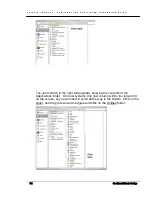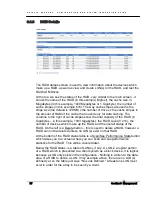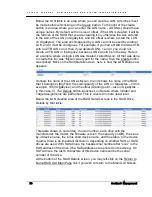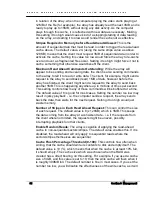
G A L A X Y ® A U R O U R A C O N F I G U R A T I O N A N D S Y S T E M I N T E G R A T I O N G U I D E
77
Section 3 Management
3.1.3
RAID Details
The RAID details screen is used to view information about the devices which
make up a RAID, as well as view and create LUN(s) on the RAID, and test the
RAID/LUN/Drives.
At the top, we see the status of the RAID, very similar to the main screen - it
shows the name of the RAID (in this example, Bigfoot), the cache size in
Megabytes (In this example, 1000 Megabytes or 1 Gigabyte), the number of
cache stripes (in this example 618). The way cache stripes are used is the
stripe size (the default is 128KB) x the number of drives x the cache stripes is
the amount of RAM of the cache that is used only for data caching. The
columns to the right of cache stripes show the total capacity of the RAID (in
Gigabytes – in this example, 1093 Gigabytes), the RAID Level (0 or 6), the
number of devices which make up the RAID, and the overall status of the
RAID. On the left is a Delete button – this is used to delete a RAID, however a
RAID can not be deleted unless no LUN(s) exist on that RAID.
At the bottom of the RAID status table is a Scan/See Performance Stats button
which takes you to a screen where you can scan and see performance
statistics for the RAID. This will be covered later.
Below the RAID status, is a table of LUN(s), if any. A LUN is a logical portion
of a RAID, which is presented to a client system as a block device. It is logical,
because a LUN only exists in the configuration - Nothing is written to the data
area of a RAID to define a LUN. In my example above, there are no LUN(s)
defined yet, so the table just says "No Luns Defined." At least one LUN must
exist in order for the array to be seen by a client.
















































